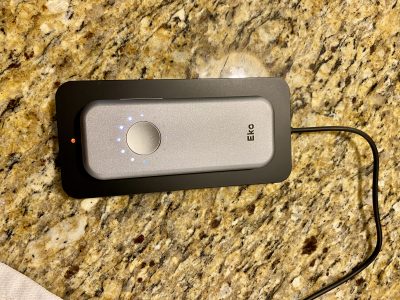from AMedNews (the AMA’s news service) comes this:
Emergency physicians face perhaps the greatest likelihood of violent encounters with patients. But internists, surgeons and others are not immune.
By Damon Adams, AMNews staff. March 7, 2005.A man high on cocaine punched four people in a Michigan emergency department before a doctor intervened and the unruly patient slugged him twice in the face.
The emergency physician needed eight stitches to close his gashed forehead. The patient spent the night in jail.
The scuffle was recalled by an anonymous emergency physician who participated in a new study on violence in emergency departments in Michigan. The study, released online last month by the Annals of Emergency Medicine, found that 76% of the 171 emergency physicians in the survey reported experiencing at least one violent act the previous year.
Three in four respondents to the 2002 questionnaire reported verbal threats, while 28% said they were victims of physical assaults. Nearly 12% were confronted outside the ED and 3.5% were stalked. The acts prompted 42% of the doctors to seek protection, including 18% who obtained a gun and 20% who bought a knife.
…
Medical leaders say emergency physicians face perhaps the greatest likelihood of violent encounters with patients because of their volatile work environment. Police and other personnel often bring violent patients to their departments, and the doctors often deal with intoxicated patients and their families.
“We generally don’t wear ties in the emergency room, because that can be used as a noose by a psychotic patient,” said Mark A. Brandenburg, MD, clinical associate professor, section of emergency medicine/department of internal medicine at the University of Oklahoma College of Medicine, Tulsa.
There is then evidence that every other group of physicians have been the target of patient violence.
Organized medicine pushes safety
American Medical Association policy encourages all health care facilities to adopt policies to reduce and prevent workplace violence and abuse. The AMA has supported efforts to develop guidelines or standards regarding hospital security issues.
Bad patient encounters “are more likely to happen in the inpatient setting or emergency room setting. [Doctors] have to have a heightened awareness in those situations,” said Jeremy A. Lazarus, MD, vice speaker of the AMA House of Delegates and a psychiatrist in Greenwood Village, Colo.
To ensure a safe emergency department, the American College of Emergency Physicians said hospitals should provide adequate security personnel, physical barriers, surveillance equipment and other security systems. Hospitals also need to educate staff about preventing, recognizing and dealing with potentially violent situations.
“We believe it’s incumbent on the hospital to create a secure environment that benefits both the patients and the physicians,” said Robert E. Suter, DO, ACEP’s president.
Doctors said hospitals don’t allow emergency physicians to carry guns. Survey respondents who obtained guns likely keep the guns in their cars, Dr. Kowalenko said.
Many emergency physicians said they feel safe at hospitals that have security personnel or off-duty police officers in their departments. Emergency physician Todd Taylor, MD, said a K-9 is a useful deterrent at his Phoenix hospital. The sight of the barking dog usually is enough to bring calm to the rowdiest patient, keeping Dr. Taylor and the other physicians from the risk of fisticuffs or stitches to the forehead.
Well, that was a weenie ending, ‘protecting docs from stitches to the forehead’. We’re talking about assaults against Docs, Nurses and Techs in and around the ED, where the normal ‘rules of engagement’ for strangers are suspended because it’s a hospital. We’re expected to be on our best behavior around patients, many of whom are verbally abusive, and a few of whom are actually violent.
And, those changes ROE’s is why assaults are more likely to happen. On the street, none of us are going near a hostile, drunk person without a lot of help (read cops); in the ED, while there are cops around they’re not Right There when we treat patients.
I have some comments on the passive security stuff (cameras and the like), but have to get to work. More later.




Some ERs have a firm policy when it comes to aggressive and combative behavior with intoxicated patients. I remember one very busy Northern Virginia hospital had a policy where three outbursts (“three ‘f*-you’s'”) and you got to smoke the White Owl.
The white owl would be an ETT?
I don’t know about smoking the White Owl, but I’ve rolled a few patients in ER’s for being abusive to techs, nurses, docs, and students.
I can’t tell you how many patients I’ve had to struggle against and 4-point for being overtly violent as an ED Tech.
And you can’t fight back either – defending himself against a repeat abusive drunk cost one of my co-workers his job.
White Owl=ETT
Carsten, that’s exactly what I mean about the normal ROE being suspended. And it’s not right, in many cases.
Just curious, do you have metal detectors at the ED door? Our hospital thinks it might offend our patients. At my last job I was jumped on by three gang members in the “Family/Consultation Room”, had a gun pointed at me in triage, and was threatened many times. The hospital I am at currently is starting to see more of the violent patients. I have asked for metal detectors, but no luck.
No, the current place doesn’t have them; we, too, are ‘happy customer’ focused.